The following lecture videos were initially presented by the Arizona Senior Academy as webinars. The presenters have agreed to include their webinar presentations as videos on this list. The videos have been placed on this page 10 days or more following the initial presentation, and withdrawn several months following the presentation. The first one on the right (Fenstermacher) is particularly helpful for those new to Academy Village.
Enjoy!
April 14, April 21, April 28, May 5: Michael Brescia–“Biographies of Power & Culture in Colonial Mexico: Biography as History & Origins of Mestizaje in Mexico”
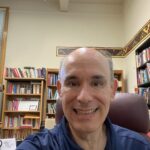 Early Mexican history provides us with understandings of interconnected lives and cultural experiences as filtered through the disparities of power that accompanied Spanish colonialism and its multiple agents. In 4 presentations on this topic, Dr. Brescia introduces the major themes and establishes the nature and scope of biography as a tool to uncover the experiences of Indigenous peoples and Spaniards in the early days of cross contact. Click here for 1; click here for 2; click here for 3; here for 4; click here for 5
Early Mexican history provides us with understandings of interconnected lives and cultural experiences as filtered through the disparities of power that accompanied Spanish colonialism and its multiple agents. In 4 presentations on this topic, Dr. Brescia introduces the major themes and establishes the nature and scope of biography as a tool to uncover the experiences of Indigenous peoples and Spaniards in the early days of cross contact. Click here for 1; click here for 2; click here for 3; here for 4; click here for 5
April 7, 9 &11: Gary Fenstermacher–Formation and Decline of Public Schooling in the U.S.”
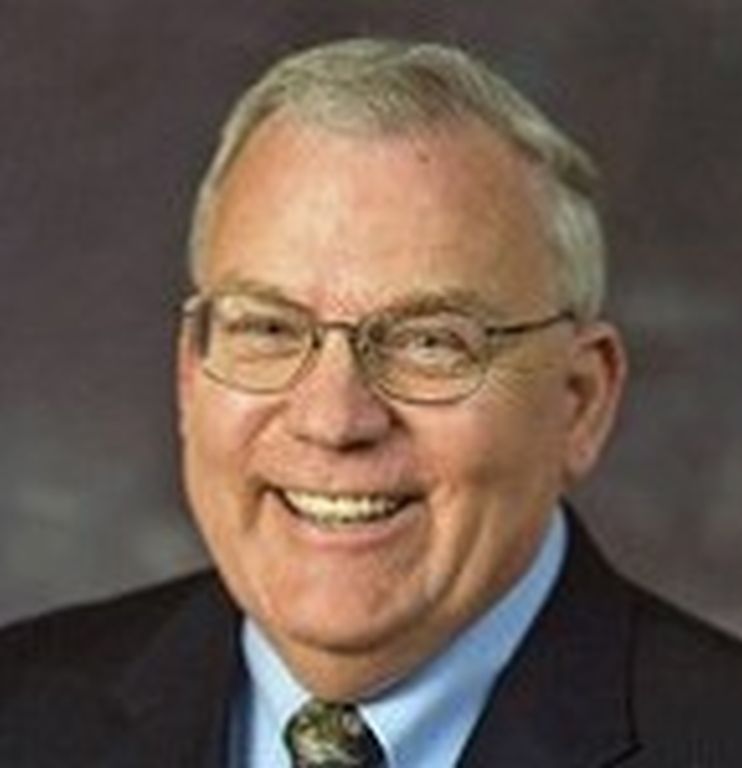 A three-part series by Dr. Gary Fenstermacher that describes the formation and eventual decline of public schooling in the U.S., along with its effects on the vital connections between education and democracy. The first 2 focus on the historical evolution of public schooling in the U.S. The 3rd explores possible reasons for its decline. Click here for 1; click here for 2; click here for 3.
A three-part series by Dr. Gary Fenstermacher that describes the formation and eventual decline of public schooling in the U.S., along with its effects on the vital connections between education and democracy. The first 2 focus on the historical evolution of public schooling in the U.S. The 3rd explores possible reasons for its decline. Click here for 1; click here for 2; click here for 3.
April 2: Sharon A. Kennedy: “Buffalo Soldiers of Bonita Canyon: Who They Were and Who They Mourned”
After the Civil War, the U.S. Congress passed an act that included Black infantry and cavalry regiments–later called Buffalo Soldiers by the Indians they fought. After 10 years of engaging in Indian Wars on the Plains, 12 regiments were assigned to Arizona where Apache Geronimo was on the run from Mexico. Sharon Kennedy talks about this remarkable regiment. Click here
March 31: Martin Randall–“Gaugin in the South Pacific, the Moon and Sixpence: Visions of Paradise”
 For much of his life, the French artist Paul Gauguin searched for an escape from “anything that is artificial and conventional”. He lived in rural France, Martinique, and then the distant South Pacific islands of Tahiti and more remote islands of Martinique. Martin Randall, Docent & Co-Chair of Tucson Art Talks at the Tucson Art Museum, provides images of the astounding art by Gauguin. Click here
For much of his life, the French artist Paul Gauguin searched for an escape from “anything that is artificial and conventional”. He lived in rural France, Martinique, and then the distant South Pacific islands of Tahiti and more remote islands of Martinique. Martin Randall, Docent & Co-Chair of Tucson Art Talks at the Tucson Art Museum, provides images of the astounding art by Gauguin. Click here
March 26: Jonathan Lee-Confer–“Arming Against Falls, How Upper Limb Responses Can Help Prevent Falls”
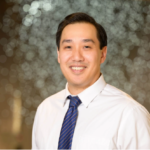 Falls are the leading cause of injury for adults 65 and older, with 1 in 3 over 65 experiencing a fall each year. Confer’s presentation explores the latest research on upper-body responses during slip incidents, their implications for physical therapy, and future directions on fall prevention strategies. Click here
Falls are the leading cause of injury for adults 65 and older, with 1 in 3 over 65 experiencing a fall each year. Confer’s presentation explores the latest research on upper-body responses during slip incidents, their implications for physical therapy, and future directions on fall prevention strategies. Click here
March 24: Christopher Houk–“The Science of Decision-Making: Understanding Bias in Workplace, the Legal System, and Society overall”
 Decision theory provides a common framework for describing how people make decisions, comparing what people actually do with what they could do, and uncovering ways to help people improve their decision-making skills. Houk’s lecture explores stories and brain science on this topic. Click here
Decision theory provides a common framework for describing how people make decisions, comparing what people actually do with what they could do, and uncovering ways to help people improve their decision-making skills. Houk’s lecture explores stories and brain science on this topic. Click here
March 19: Elizabeth Noble Rollings Friman–“Estate Planning–Tips for Success”
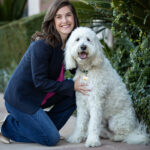 Why should individuals consider an estate plan? Elizabeth Friman explains how it can give you control over your own decisions, minimize costs, reduce family disputes, and assure that your wishes are known. It is time to review the basics and next steps for those who are developing an estate plan for the first time. Click here
Why should individuals consider an estate plan? Elizabeth Friman explains how it can give you control over your own decisions, minimize costs, reduce family disputes, and assure that your wishes are known. It is time to review the basics and next steps for those who are developing an estate plan for the first time. Click here
March 17: Jan Taplin–“Gain Independence and Age-With-Grace with in-Home Assistance”
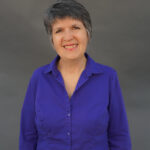 Many people desire to remain in their homes as they age. They have questions concerning the costs of home help if their funds are limited. And what happens if their needs increase with time and might some of that help need to be skilled nursing care? Jan Taplin, co-owner of A+ Elder Care Assistance, provides answers to the increasing number of individuals asking these questions. Click here
Many people desire to remain in their homes as they age. They have questions concerning the costs of home help if their funds are limited. And what happens if their needs increase with time and might some of that help need to be skilled nursing care? Jan Taplin, co-owner of A+ Elder Care Assistance, provides answers to the increasing number of individuals asking these questions. Click here
March 12: Casey Limon Condit & Jenny Neeley–“Pima County’s Sonoran Desert Conservation Plan”

 This talk provides an overview of the environmental conservation aspects of the Sonoran Desert Conservation Plan. It also demonstrates how these efforts have led to a paradigm shift in land use planning and turned Pima County into a national model for successful, community-based conservation. It also provides a brief overview of ways community members cab support these efforts. Click here
This talk provides an overview of the environmental conservation aspects of the Sonoran Desert Conservation Plan. It also demonstrates how these efforts have led to a paradigm shift in land use planning and turned Pima County into a national model for successful, community-based conservation. It also provides a brief overview of ways community members cab support these efforts. Click here
March 3: Dora Rodriguez–“Humanizing Through Stories”
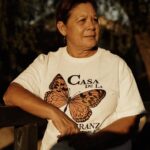 In a life-saving attempt to flee El Salvador’s civil in 1980, Rodriquez was one of 13 survivors found near death while crossing the border through the Sonoran Desert.She bravely publicized her story of migration and her unwavering support for migrants rights. As Director of Salvavision, Dora’s focus is to educate communities about the harsh realities migrants face in the desert, and to push for changes in the immigration injustices plaguing our border towns. Click here
In a life-saving attempt to flee El Salvador’s civil in 1980, Rodriquez was one of 13 survivors found near death while crossing the border through the Sonoran Desert.She bravely publicized her story of migration and her unwavering support for migrants rights. As Director of Salvavision, Dora’s focus is to educate communities about the harsh realities migrants face in the desert, and to push for changes in the immigration injustices plaguing our border towns. Click here
March 5: Callie Tippett–“Understanding the Challenges of low-income Families in Southeast Pima County”
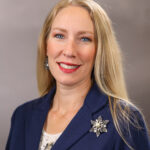 Callie Tippett shares the crisis at our own back door. Many failings in Southeastern Pima County struggle with limited access to social services, unreliable rising living costs, financial instability, and restricted healthcare access. This leads to an urgent need for expanded community support systems. She highlights how Greater Vail Community Resources helps meet these needs and how their missions can grow. Click here
Callie Tippett shares the crisis at our own back door. Many failings in Southeastern Pima County struggle with limited access to social services, unreliable rising living costs, financial instability, and restricted healthcare access. This leads to an urgent need for expanded community support systems. She highlights how Greater Vail Community Resources helps meet these needs and how their missions can grow. Click here
Feb 28: Gary Fenstermacher–“The Academy Villas”
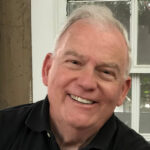 Dr. Fenstermacher’s presentation focuses on the Academy Villas, an Assisted Living Center located on the Academy Village campus. It consists of two assisted living facilities for Academy Village residents and others in the community. Designed and operated on the Greenhouse model, these two buildings provide 24-hour/day care for elderly individuals who require extra help. Fenstermacher provides the history and operation of these two facilities. Click here
Dr. Fenstermacher’s presentation focuses on the Academy Villas, an Assisted Living Center located on the Academy Village campus. It consists of two assisted living facilities for Academy Village residents and others in the community. Designed and operated on the Greenhouse model, these two buildings provide 24-hour/day care for elderly individuals who require extra help. Fenstermacher provides the history and operation of these two facilities. Click here
Feb 24: Karen Jimenez–“Functional Medicine: Understanding the Missing Link to Optimal Health and Wellness”
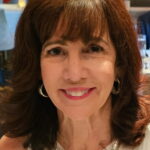 Karyn Jimenez explains how Functional Medicine addresses the underlying causes of an individual’s health and wellness issues resulting from common lifestyle choices. These choices are appealing because they offer convenience, require little effort, and are socially encouraged. She reviews the common problems with poor choices and tells how we can shift perspectives and practice to stay optimally healthy. Click here
Karyn Jimenez explains how Functional Medicine addresses the underlying causes of an individual’s health and wellness issues resulting from common lifestyle choices. These choices are appealing because they offer convenience, require little effort, and are socially encouraged. She reviews the common problems with poor choices and tells how we can shift perspectives and practice to stay optimally healthy. Click here
Feb 19: Randy Nesse–“Anxiety Disorders: How our Clinic Steadily Improved Treatments”
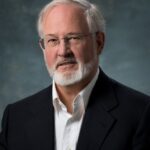 When the Anxiety Disorders Clinic at the University of Michigan was established, little was known about the topic. The research mission was expanded in response to hundreds of people who called, desperate for help. Dr. Randy Nesse summarizes what we now know about the diagnosis and treatment of anxiety disorders, highlighting some especially fascinating cases. Click here
When the Anxiety Disorders Clinic at the University of Michigan was established, little was known about the topic. The research mission was expanded in response to hundreds of people who called, desperate for help. Dr. Randy Nesse summarizes what we now know about the diagnosis and treatment of anxiety disorders, highlighting some especially fascinating cases. Click here
Feb 12: Arum Park–Kamila Shamsie’s Home Fire and Sophocles’ Antigone”
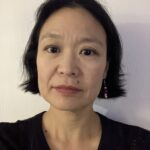 Dr. Arum Park presents the work of Kamila Shamsie’s Home Fire, which reimagines Sophocles’ Antigone as a story of a British Muslim family whose religious and ethnic identity becomes a source of conflict. Shamsie offers us a fresh lens through which to view Antigone. This illustrates the power of new stories to illuminate old ones. Click here
Dr. Arum Park presents the work of Kamila Shamsie’s Home Fire, which reimagines Sophocles’ Antigone as a story of a British Muslim family whose religious and ethnic identity becomes a source of conflict. Shamsie offers us a fresh lens through which to view Antigone. This illustrates the power of new stories to illuminate old ones. Click here
Feb 10: Barbara Eiswerth–“Iskashitaa Refugee Network”
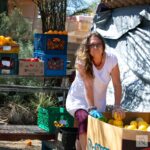 Iskshita Refuge Network (IRN) empowers refugees through innovative food security initiatives, meaningful work opportunities, and cultural exchange programs, foster a stronger, more connected community. Eiswerth describes the network, and how it operates to empower refugees by providing them with skills and knowledge to grow towards deeper community involvement. Click here
Iskshita Refuge Network (IRN) empowers refugees through innovative food security initiatives, meaningful work opportunities, and cultural exchange programs, foster a stronger, more connected community. Eiswerth describes the network, and how it operates to empower refugees by providing them with skills and knowledge to grow towards deeper community involvement. Click here
Feb 5: Lynne A Schepartz-“Anthropology of Food”
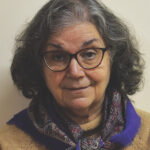 Lynne A Schepartz is a biological anthropologist for the U of A Desert Laboratory on Tumamoc Hill. She suggests that while eating is a natural behavior, akin to sleeping and locomotion, food is anything but natural for humans. Only humans develop elaborate systems of food preparation. Thus, the study of food and culture is a lens for examining biological and behavioral diversity. Click here
Lynne A Schepartz is a biological anthropologist for the U of A Desert Laboratory on Tumamoc Hill. She suggests that while eating is a natural behavior, akin to sleeping and locomotion, food is anything but natural for humans. Only humans develop elaborate systems of food preparation. Thus, the study of food and culture is a lens for examining biological and behavioral diversity. Click here
Feb 3: Bryan Carter–“Experiencing the Harlem Renaissance”
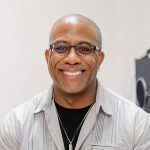 Dive into the Harlem Renaissance, a whirlwind of African American artistry and intellect in the Roaring Twenties! Dr. Bryan Carter, Professor of Africana Studies at the University of U of A. Indicates that it was a time when black pride soared, exemplified by significant parades and the rise of influential organizations like the NAACP and Urban League. Click here
Dive into the Harlem Renaissance, a whirlwind of African American artistry and intellect in the Roaring Twenties! Dr. Bryan Carter, Professor of Africana Studies at the University of U of A. Indicates that it was a time when black pride soared, exemplified by significant parades and the rise of influential organizations like the NAACP and Urban League. Click here
Jan 27: Laura Ann Miller–“Horses in Motion: A History of the Biomechaniscs of Movement”
 This presentation provided new insights into the science of horse movement. Dr. Laura Miller highlights the millennia-old partnership between horses and humans and how it has influenced history, science, and technology. Studying the mechanics of equine movement as well the dynamics of horse /human interactions can inspire innovations and new STEM opportunities. Click here
This presentation provided new insights into the science of horse movement. Dr. Laura Miller highlights the millennia-old partnership between horses and humans and how it has influenced history, science, and technology. Studying the mechanics of equine movement as well the dynamics of horse /human interactions can inspire innovations and new STEM opportunities. Click here
Jan 13: Timothy Wadkins–“The Rise of Modern Global Christianity”
 Where have all the Christians gone? It turns out that Christianity has not actually shrunk but has shifted geographically: a dramatic movement toward the less economically developed world, primarily in the southern hemisphere. Dr. Wadkins delves into this profound geographical and cultural shift in modern Christianity. Click here
Where have all the Christians gone? It turns out that Christianity has not actually shrunk but has shifted geographically: a dramatic movement toward the less economically developed world, primarily in the southern hemisphere. Dr. Wadkins delves into this profound geographical and cultural shift in modern Christianity. Click here
Jan 8: Bella Vivante–“Women Sing Homer”
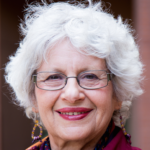 The Greek Poet Homer’s two great epics The Iliad and The Odyssey have inspired several thousand years of creative works. The last three decades have seen twice as many works of fiction inspired by these ancient tales opened by women artists as by men. Professor Emeritus, Bella Vivante explores this fascination. Click here
The Greek Poet Homer’s two great epics The Iliad and The Odyssey have inspired several thousand years of creative works. The last three decades have seen twice as many works of fiction inspired by these ancient tales opened by women artists as by men. Professor Emeritus, Bella Vivante explores this fascination. Click here
Jan. 6: Anna Dornhaus–“Collective Intelligence–How it Works and Why It Fails”
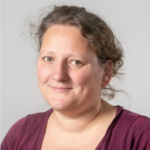 We often wish that societies were more collectively intelligent. Anna Dornhaus offers insights into what helps and hinders collective problem-solving in human societies by drawing parallels to other biological and human/engineered systems like ant colonies, cellular societies, and computer networks that pool individual behaviors and self-organization. Click here
We often wish that societies were more collectively intelligent. Anna Dornhaus offers insights into what helps and hinders collective problem-solving in human societies by drawing parallels to other biological and human/engineered systems like ant colonies, cellular societies, and computer networks that pool individual behaviors and self-organization. Click here
Dec. 18: Alta Kelsi Vanada–“Encountering World Literature in Translation”
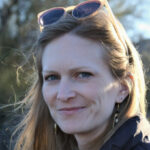 Kelsi Vanada, the U of A Humanities Seminar Program Director, describes the ‘translation’ course summary from the Humanities Seminar. She describes the various questions literary translators must consider when translating poetry and fiction from other languages into English. Is translation of literary texts actually possible, or is the “essence” of a text lost in translation? Click here
Kelsi Vanada, the U of A Humanities Seminar Program Director, describes the ‘translation’ course summary from the Humanities Seminar. She describes the various questions literary translators must consider when translating poetry and fiction from other languages into English. Is translation of literary texts actually possible, or is the “essence” of a text lost in translation? Click here
Dec. 16: Danny Valenzuela–“El Camino de Santiago, A Pilgrim Walk of a Lifetime”
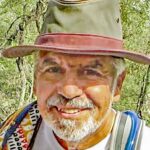 People walk the paths and roads that make up the Camino de Santiago for a variety of reasons: it’s a pilgrimage for spiritual/religious reasons; or it could be for self-reflection, connection with nature or other reasons. Danny Valenzuela tells the story of his 485.4 mile walk on the French route of Camino de Santiago in 2023. Click here
People walk the paths and roads that make up the Camino de Santiago for a variety of reasons: it’s a pilgrimage for spiritual/religious reasons; or it could be for self-reflection, connection with nature or other reasons. Danny Valenzuela tells the story of his 485.4 mile walk on the French route of Camino de Santiago in 2023. Click here
Dec. 11: Lizzy Guevara–“Overview of Life of Carlos Bernal and Exhibit of Photographs”
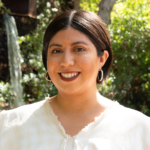 Louis Carlos Bernal has been described “a groundbreaking figure in the history of photography”. Lizzy Bernal, Louis Carnal Bernal Fellow in the Center for Creative Photography, U of Arizona, provides an overview of his life and career; and a brief walk-through” of the Bernal exhibition at the Center for Creative Photography being held until March 15, 2025. Click here
Louis Carlos Bernal has been described “a groundbreaking figure in the history of photography”. Lizzy Bernal, Louis Carnal Bernal Fellow in the Center for Creative Photography, U of Arizona, provides an overview of his life and career; and a brief walk-through” of the Bernal exhibition at the Center for Creative Photography being held until March 15, 2025. Click here
Dec. 4: Brad Lancaster–“Planting the Rain(and other free-on-site waters) to Grow Sustainable Abundance”
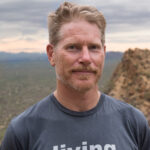 This presentation shares patterns and strategies to harvest, integrate, and enliven free local resources–such as rain and stormwaters; sun, wind, and shade; along with soil fertility, wild foods, and community fun–in a way that generates more potential than the sum of their parts. Lancaster is the author of the award-winning Rainwater Harvesting for Drylands and Beyond. Click here
This presentation shares patterns and strategies to harvest, integrate, and enliven free local resources–such as rain and stormwaters; sun, wind, and shade; along with soil fertility, wild foods, and community fun–in a way that generates more potential than the sum of their parts. Lancaster is the author of the award-winning Rainwater Harvesting for Drylands and Beyond. Click here
Dec. 2: Martin Randall–“Gustav Klimpt: Painter of Gold”
 Martin Randall, Docent and co-chair of Tucson Art Talks at Tucson Art Museum. looks at artist Gustav Klimpt’s life and career from his humble beginnings, through his break with the past in helping form the Viennese Secession to his bold and dramatic new painting style that made him famous–the new and exciting world of Symbolism and Art Nouveau. Click here
Martin Randall, Docent and co-chair of Tucson Art Talks at Tucson Art Museum. looks at artist Gustav Klimpt’s life and career from his humble beginnings, through his break with the past in helping form the Viennese Secession to his bold and dramatic new painting style that made him famous–the new and exciting world of Symbolism and Art Nouveau. Click here
Nov. 25: Valeria Pfeifer–“Saying What You Mean–What Verbal Irony and Other Forms of Figurative Language Reveal Anout Emotion”
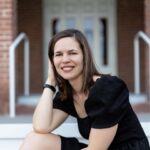 Dr. Valeria Pfeifer is studying what language can reveal about cognition and emotion. She discusses different kinds of figurative language and what they reveal about emotions; and the recent experimental work on using verbal irony to manage felt negativity. She then focuses on swear and taboo language. Drawing from this work, she argues more broadly for more research on figurative language. Click here
Dr. Valeria Pfeifer is studying what language can reveal about cognition and emotion. She discusses different kinds of figurative language and what they reveal about emotions; and the recent experimental work on using verbal irony to manage felt negativity. She then focuses on swear and taboo language. Drawing from this work, she argues more broadly for more research on figurative language. Click here
Nov. 20: Wally R. Wilson–“Lower Santa Cruz River Basin Groundwater Study–Summary Presentation”
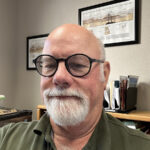 Academy Village and neighboring developments are serviced by a water provider, Spanish Trail Water, which obtained 100 year Assured Water Supply certification in April, 1996. The water is 100% groundwater with only natural recharge of the aquifer by seasonal rains and mountain runoff. Wally Wilson, the Water Resources Manager and team member on the Lower Santa Cruz River Basin Groundwater Study, discusses the nature of our groundwater levels in the Rincon Valley area. Click here
Academy Village and neighboring developments are serviced by a water provider, Spanish Trail Water, which obtained 100 year Assured Water Supply certification in April, 1996. The water is 100% groundwater with only natural recharge of the aquifer by seasonal rains and mountain runoff. Wally Wilson, the Water Resources Manager and team member on the Lower Santa Cruz River Basin Groundwater Study, discusses the nature of our groundwater levels in the Rincon Valley area. Click here
Nov. 13: Jim O”Connor–“Indigenous Spirituality and Astronomy”
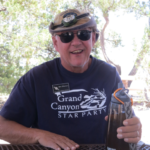 In 1054 AD a stunning new star appeared. It became bright enough to be seen during the day for over 2 weeks. Only two records of this event exist: from the Chinese and the Ancestral Puebloan people of the Southwest US. O’Connor explores how Navajo, Apache, and O’odham experience a spiritual force linking directly to their creator through nature–often the stars. Click here
In 1054 AD a stunning new star appeared. It became bright enough to be seen during the day for over 2 weeks. Only two records of this event exist: from the Chinese and the Ancestral Puebloan people of the Southwest US. O’Connor explores how Navajo, Apache, and O’odham experience a spiritual force linking directly to their creator through nature–often the stars. Click here
Nov. 11: Xiran Chen–“Chiefs and Pre-Election Violence in Sub-Saharan Africa”
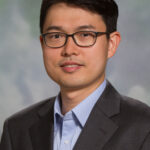 Dr. Xiran Chen examines how African chiefs shape local patterns of Pre-Election Violence (PEV). Specifically, with evidence from Ghana, Dr. Chen provides evidence to support this claim, including case studies and a quantitative analysis of election. These findings highlight the roles community leader play in shaping the dynamics of PEV in rural African areas. Click here
Dr. Xiran Chen examines how African chiefs shape local patterns of Pre-Election Violence (PEV). Specifically, with evidence from Ghana, Dr. Chen provides evidence to support this claim, including case studies and a quantitative analysis of election. These findings highlight the roles community leader play in shaping the dynamics of PEV in rural African areas. Click here
Nov. 7: Michael Brescia–“Ex Libris Mexicanis: What a Rare Book Library Tells Us About Mexican History”
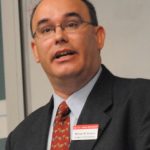 University of Arizona historian, Dr. Michael Brescia examines the evolution of the venerable Biblioteca Palafoxiana, located in Pueblo, Mexico, and designated as the first public library in the Americas. He discusses the library’s foundations in 1646, its role in colonial society, its entanglement with Mexico politics, and how it has responded to multiple natural disasters. Click here
University of Arizona historian, Dr. Michael Brescia examines the evolution of the venerable Biblioteca Palafoxiana, located in Pueblo, Mexico, and designated as the first public library in the Americas. He discusses the library’s foundations in 1646, its role in colonial society, its entanglement with Mexico politics, and how it has responded to multiple natural disasters. Click here
Nov. 4: Ron Bridgeman–“The Amazing Village of Mata Ortiz”
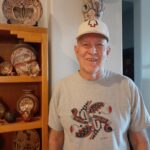 Ron Bridgemon presents a general introduction to the pottery of Mata Ortiz, a remote village in Chihuahua, Mexico. This village, which consists of 1200 residents has 500 ceramic artists who produce what has been called the finest pottery in the world. He has been leading trips to Mata Ortiz since 1966. Click here
Ron Bridgemon presents a general introduction to the pottery of Mata Ortiz, a remote village in Chihuahua, Mexico. This village, which consists of 1200 residents has 500 ceramic artists who produce what has been called the finest pottery in the world. He has been leading trips to Mata Ortiz since 1966. Click here
Oct. 28 and Oct. 30: Dario Brignoli–“The Clarinet and its Music”, Part 1 and 2
 Dario Brignoli, Principal Clarinet of the Tucson Symphony Orchestra, leads us on a two-part musical journey through the history of the clarinet, starting with the folk instrument predecessor through its evolution into the modern clarinet. He explains how the clarinet is different from the other instruments of the woodwind family, and introduces the different members of the clarinet family. Examples of music ranging from Carl Stamitz to Brahms, from Mozart to Stravinsky and Prokofiev, among others. Click here for Part I: Click here for Part II.
Dario Brignoli, Principal Clarinet of the Tucson Symphony Orchestra, leads us on a two-part musical journey through the history of the clarinet, starting with the folk instrument predecessor through its evolution into the modern clarinet. He explains how the clarinet is different from the other instruments of the woodwind family, and introduces the different members of the clarinet family. Examples of music ranging from Carl Stamitz to Brahms, from Mozart to Stravinsky and Prokofiev, among others. Click here for Part I: Click here for Part II.
Oct. 23: Sarah Porter, Denice Smith, Norm Scott–“What is Our Water Source and How is Assured Water Supply Certified? –A Panel Discussion”
 A set of questions approached by a panel consisting of Arizonans who study and write policy about the water situation in Arizona. Critical questions are addressed including: “What are the basic principles and hydrology of the aquifer that supplies groundwater for this area?” Panelists: Sarah Porter, Denice Smith, Chris Brooks moderated by Norm Scott. Click here
A set of questions approached by a panel consisting of Arizonans who study and write policy about the water situation in Arizona. Critical questions are addressed including: “What are the basic principles and hydrology of the aquifer that supplies groundwater for this area?” Panelists: Sarah Porter, Denice Smith, Chris Brooks moderated by Norm Scott. Click here
Oct. 21: Elizabeth Sparks: “Growing Good Kids: How Tucson Village Farm is Impacting Our Community”
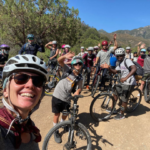 Children living in an urban environment frequently have no close connection with the land from which their food comes. Tucson Village Farm is a seed-to-table program designed to reconnect young people to a healthy food system, and teach them how to grow and prepare fresh food. Elizabeth Sparks is a 4-H Youth Development Associate Agent, and describes this remarkable program. Click here
Children living in an urban environment frequently have no close connection with the land from which their food comes. Tucson Village Farm is a seed-to-table program designed to reconnect young people to a healthy food system, and teach them how to grow and prepare fresh food. Elizabeth Sparks is a 4-H Youth Development Associate Agent, and describes this remarkable program. Click here
Oct. 16: Andrew Woods–“Space Law”
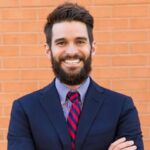 Dr. Andrew Law, Milton O. Riepe Professor of Law, U of A College of Law, introduces us to the set of laws that regulate activities in space. These laws indicate how our country is regulated by international law as it sends missions into space and uses space for communications for communications, exploration and other important purposes. Click here
Dr. Andrew Law, Milton O. Riepe Professor of Law, U of A College of Law, introduces us to the set of laws that regulate activities in space. These laws indicate how our country is regulated by international law as it sends missions into space and uses space for communications for communications, exploration and other important purposes. Click here
Oct. 14: Mike Noland–“OSIRIS-REx News and the Upcoming OSIRIS-APEX Mission”
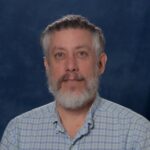 Dr. Noland is the OSIRIS-APEX Mission Deputy PI at the Lunar and Planetary Laboratory, U of Arizona. He describes the U of A-led project in which the spacecraft returned to earth with its sample of asteroid Bennu just over a year ago. The spacecraft then fired its rockets to head to the asteroid Apophis, as a new mission. Click here
Dr. Noland is the OSIRIS-APEX Mission Deputy PI at the Lunar and Planetary Laboratory, U of Arizona. He describes the U of A-led project in which the spacecraft returned to earth with its sample of asteroid Bennu just over a year ago. The spacecraft then fired its rockets to head to the asteroid Apophis, as a new mission. Click here
Oct. 9: Jim Knoll–“Amateur Astronomy in Tucson:
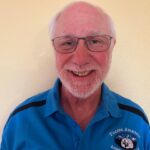 Jim Knoll is the Director of the Tucson Amateur Astronomy Association. He highlights the well-known beautiful night skies we have in Southern Arizona, and provides a solar telescope to view our own amazing star, the Sun. Jim, a retired Air Force Officer, explains the history of the Astronomy Association and how it benefits its members. Click here
Jim Knoll is the Director of the Tucson Amateur Astronomy Association. He highlights the well-known beautiful night skies we have in Southern Arizona, and provides a solar telescope to view our own amazing star, the Sun. Jim, a retired Air Force Officer, explains the history of the Astronomy Association and how it benefits its members. Click here
Oct. 2: Brittany Smith–“Youth on Their Own”
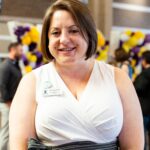 Homeless and unaccompanied youth represent a unique population with their own set of challenges from homeless adults. They often lack financial incentive, basic needs, and motivational guidance. Founded in 1986, Youth on Their Own is a local, grassroots org. which has supported these youth in their quest to graduate High School. Brittany Smith, Associated Director describes its attempts to help this population. Click here
Homeless and unaccompanied youth represent a unique population with their own set of challenges from homeless adults. They often lack financial incentive, basic needs, and motivational guidance. Founded in 1986, Youth on Their Own is a local, grassroots org. which has supported these youth in their quest to graduate High School. Brittany Smith, Associated Director describes its attempts to help this population. Click here
Sept. 30: Nicola Hartmann–“The State of Homelessness in Tucson”
 The U.S. Supreme Court’s recent ruling upholding city ordinances prohibiting homeless encampments has renewed local concerns over the increasing problem of finding shelter for unhoused individuals. Between 2018 & 2023, Pima County saw an 60% growth in the number of at-risk persons. Our speaker on this topic, Nicola Hartman, is the Chief Executive officer for Sister Jose Women’s Center. Click here
The U.S. Supreme Court’s recent ruling upholding city ordinances prohibiting homeless encampments has renewed local concerns over the increasing problem of finding shelter for unhoused individuals. Between 2018 & 2023, Pima County saw an 60% growth in the number of at-risk persons. Our speaker on this topic, Nicola Hartman, is the Chief Executive officer for Sister Jose Women’s Center. Click here
Sept. 25: Greg Garfin–“Science and Society Partnering to Adapt to a Changing Climate”
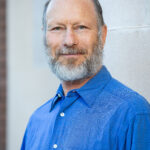 The management of coupled human and environmental systems, amidst uncertainty and rapid climate, environmental, and societal changes is a daunting challenge. Greg Garfin, Professor in the School of Natural Resources & the Environment, focuses on adaptation to climate-related risks; and works to bridge the science-society interface through dialogues between scientists and decision makers. Click here
The management of coupled human and environmental systems, amidst uncertainty and rapid climate, environmental, and societal changes is a daunting challenge. Greg Garfin, Professor in the School of Natural Resources & the Environment, focuses on adaptation to climate-related risks; and works to bridge the science-society interface through dialogues between scientists and decision makers. Click here
Sept 23: Tony Davis–“Assessing Challenges of Water Resources in Arizona”
 Arizona Daily Star environmental reporter, Tony Davis, discusses current water issues based on his extensive analysis of water policy for more than 20 years. The issues include regional growth, groundwater use, transfer of water rights, agricultural water rights, and politics of certification of assure water availability. Click here
Arizona Daily Star environmental reporter, Tony Davis, discusses current water issues based on his extensive analysis of water policy for more than 20 years. The issues include regional growth, groundwater use, transfer of water rights, agricultural water rights, and politics of certification of assure water availability. Click here
Sept. 18: Matthew Grilli–“Cognition in Older Age: Separating Fact from Fiction”
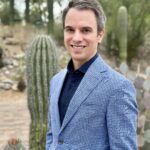 There is considerable interest in–and some confusion about–how cognition changes as we age. Dr. Matthew Grilli explains what typical mind aging looks like, and how it is differs from dementia. Sharing current research, he indicates how cognitive difficulties are often subtle, and some aspects may actually improve until advanced age. Click here
There is considerable interest in–and some confusion about–how cognition changes as we age. Dr. Matthew Grilli explains what typical mind aging looks like, and how it is differs from dementia. Sharing current research, he indicates how cognitive difficulties are often subtle, and some aspects may actually improve until advanced age. Click here
Sept 16: Eileen Wong–“A Universal Design Perspective on Supporting Communities with Hearing Loss”
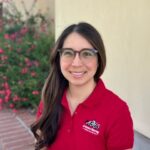 Hearing losses in individuals and groups impacts our community and affects not only the individual who has hearing loss, but also those with whom they live and must communicate. Dr. Wong explains where on can go for help, and how support networks can be developed in a community. She also describes approaches to treating hearing loss at the individual level, and how we can shift our thinking about communication. Click here
Hearing losses in individuals and groups impacts our community and affects not only the individual who has hearing loss, but also those with whom they live and must communicate. Dr. Wong explains where on can go for help, and how support networks can be developed in a community. She also describes approaches to treating hearing loss at the individual level, and how we can shift our thinking about communication. Click here
Sept 12: League of Women’s Voters: “2024 Ballot Presentation Seminar”
Conducted by the League of Women’s Voters on up-coming elections. Click here
Aug. 27: Alexander Tentser–“The Golden Age of Piano: Frederic Chopin and his 24 Preludes”
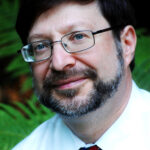 Dr. Tentser provides an opportunity to learn more about Chopin’s respected artistry. He demonstrates that Chopin’s piano music represents a pinnacle of beauty in Western arts. In this talk, the artistic and musical principles of Romanticism are presented through the works of Chopin, particularly his 42 Preludes. Chopin’s connection with Baroque masters, particularly J.S. Bach, is explored. Click here
Dr. Tentser provides an opportunity to learn more about Chopin’s respected artistry. He demonstrates that Chopin’s piano music represents a pinnacle of beauty in Western arts. In this talk, the artistic and musical principles of Romanticism are presented through the works of Chopin, particularly his 42 Preludes. Chopin’s connection with Baroque masters, particularly J.S. Bach, is explored. Click here
Aug. 19: Kari Calvarese–“How A Court Appointed Special Advocate Can make a Difference in the Life of a Foster Child”
 This presentation outlines how the child welfare system works in Arizona. This begins with an explanation of how children come into foster care and what happens when they are in the system. Kari Calvarese describes this system from the court, family, and child’s perspective. An important component is the system that advocates for the best interest of children in foster care: CASA, or Court Appointed Special Advocates. Click here
This presentation outlines how the child welfare system works in Arizona. This begins with an explanation of how children come into foster care and what happens when they are in the system. Kari Calvarese describes this system from the court, family, and child’s perspective. An important component is the system that advocates for the best interest of children in foster care: CASA, or Court Appointed Special Advocates. Click here
Aug. 5: Ruth Gomes–“A Chair Tour of Tucson’s Murals”
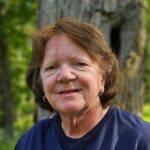 When Ruth Gomes moved to Tucson, she organized a shuttle service exploring the various murals that tell important stories about our culture, as well as demonstrating a mastery of the mural art form. She also developed a slide show that she will share during her presentation. She is also an artist, and a teacher of art. Click here
When Ruth Gomes moved to Tucson, she organized a shuttle service exploring the various murals that tell important stories about our culture, as well as demonstrating a mastery of the mural art form. She also developed a slide show that she will share during her presentation. She is also an artist, and a teacher of art. Click here
Gary Fenstermacher: “Envisioning a Different Way to Retire–The First Quarter Century of Academy Village”
 Gary Fenstermacher, emeritus professor at the University of Michigan, has lived in Academy Village for 15 years. He examines Henry Koffler’s founding vision for Academy Village, the five years of planning that preceded the first home in the Village, and the two decades since. Fenstermacher considers events in the early 2,000’s that altered Koffler’s vision, sometimes for the better and sometimes not. Click here
Gary Fenstermacher, emeritus professor at the University of Michigan, has lived in Academy Village for 15 years. He examines Henry Koffler’s founding vision for Academy Village, the five years of planning that preceded the first home in the Village, and the two decades since. Fenstermacher considers events in the early 2,000’s that altered Koffler’s vision, sometimes for the better and sometimes not. Click here
July 22: David Sbarra–“”Your Relationships, Your Health”
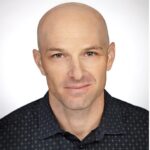 Aging often means losing friends, living far away from family, and being unable to engage in activities once enjoyed. This can lead to a sense of isolation and withdrawal from society. Dr. David Sbarra, Chair of Health Psychology at the U of A, discusses the science behind the health advisory recently prepared by the US Surgeon General’s office related to the rising epidemic of social disconnection, loneliness and isolation. Click here
Aging often means losing friends, living far away from family, and being unable to engage in activities once enjoyed. This can lead to a sense of isolation and withdrawal from society. Dr. David Sbarra, Chair of Health Psychology at the U of A, discusses the science behind the health advisory recently prepared by the US Surgeon General’s office related to the rising epidemic of social disconnection, loneliness and isolation. Click here
July 15: Brian Watson–“IRS Criminal Investigation–from Al Capone to Present-Day High Profile Financial Investigations”
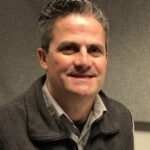 Brian Watson spent 28 years as a Social Agent and Information Officer with the IRS. He talks about the history of the agency, the types of crimes that are investigated, and investigative techniques; and shares some stories as well as examples of recent investigations. High profile cases related to tax fraud are described, as well as other violations including identity theft schemes, and healthcare fraud. Click here
Brian Watson spent 28 years as a Social Agent and Information Officer with the IRS. He talks about the history of the agency, the types of crimes that are investigated, and investigative techniques; and shares some stories as well as examples of recent investigations. High profile cases related to tax fraud are described, as well as other violations including identity theft schemes, and healthcare fraud. Click here
July 8: Margaux DeConcini–“Therapeutic Riding of Tucson (TROT)”
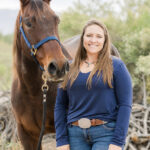 Margaux DeConcini describes how a local organization (Therapeutic Riding of Tucson) harnesses the bond between humans and horses to foster physical, emotional, and psychological healing. The results are life-changing benefits to individuals with disabilities and special needs. She describes the range of equine-assisted programs offered by TROT that are designed to promote personal growth, social skills, and overall well-being for participants of all ages. Click here
Margaux DeConcini describes how a local organization (Therapeutic Riding of Tucson) harnesses the bond between humans and horses to foster physical, emotional, and psychological healing. The results are life-changing benefits to individuals with disabilities and special needs. She describes the range of equine-assisted programs offered by TROT that are designed to promote personal growth, social skills, and overall well-being for participants of all ages. Click here
July 1: Stacy Tecot–“Investigating Reproduction and Infant Care in Wild, threatened Lemurs in Madagascar”
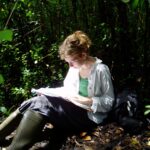 Dr. Stacey Tecot, a U of A Anthropologist, provides insights into the process of studying lemurs–adorable primates endemic to the Island of Madagascar. Since 2000, Dr. Tecot has studied wild, red-bellied lemurs in Ranomafana National Park, where she co-directs the Lemur Project with Dr. Rachel Jacobs. She describes some of her work using non-invasive methods to collect population growth/decline over time. Click here
Dr. Stacey Tecot, a U of A Anthropologist, provides insights into the process of studying lemurs–adorable primates endemic to the Island of Madagascar. Since 2000, Dr. Tecot has studied wild, red-bellied lemurs in Ranomafana National Park, where she co-directs the Lemur Project with Dr. Rachel Jacobs. She describes some of her work using non-invasive methods to collect population growth/decline over time. Click here
June 24: Firas Kaddouh–“Approach to Comatose Patient and End-Of-Life Care”
 Dr. Kaddouh, Director, Neurosciences ICU at Banner University Medical Center, discusses the processes & outcomes of ‘coma’ in the context of end-of-life care, and how they are diagnosed. He then discusses how doctors may communicate uncertainty when explaining the prognosis for a comatose person, and when necessary, the measures that align with the patient’s values and wishes. Click here
Dr. Kaddouh, Director, Neurosciences ICU at Banner University Medical Center, discusses the processes & outcomes of ‘coma’ in the context of end-of-life care, and how they are diagnosed. He then discusses how doctors may communicate uncertainty when explaining the prognosis for a comatose person, and when necessary, the measures that align with the patient’s values and wishes. Click here
June 17: Sabina Srokova–“Neuroimaging of the Aging Brain: Exploring age-related differences in Memory Abilities with MRI”
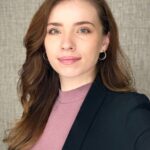 Dr. Srokova, a postdoctoral fellow in the Human Spatial Cognition Lan, U of A, explains two neuroimaging MRI methodologies commonly used by cognitive neuroscientists to study the human brain: Structural MRI and Functional MRI. These two approaches provide ways of examining various aspects of the brain–and changes in process due to aging. Click here
Dr. Srokova, a postdoctoral fellow in the Human Spatial Cognition Lan, U of A, explains two neuroimaging MRI methodologies commonly used by cognitive neuroscientists to study the human brain: Structural MRI and Functional MRI. These two approaches provide ways of examining various aspects of the brain–and changes in process due to aging. Click here
June 10: Cassandra Warney: “Housing is a Solution to Homelessness: Reentry in NYC, Time County, Beyond”
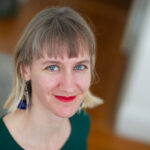 Our humanity calls us to understand and help solve the individual and collective challenges facing people struggling to survive without safe affordable shelter. Warney is a public policy strategist, and Senior Program Officer, Corporation for Supportive Housing–New York, New Jersey and Pennsylvania. She shares how several cities, backed by robust research, are using ‘Housing First’ as an effective approach to reducing homelessness. Click here
Our humanity calls us to understand and help solve the individual and collective challenges facing people struggling to survive without safe affordable shelter. Warney is a public policy strategist, and Senior Program Officer, Corporation for Supportive Housing–New York, New Jersey and Pennsylvania. She shares how several cities, backed by robust research, are using ‘Housing First’ as an effective approach to reducing homelessness. Click here
May 29: Bill Sallurday–“Resources/Outreach to Safeguard the Elderly (R.O.S.E.) Scam Safety Workshop”
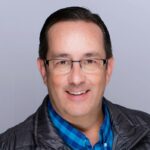 Bill Sallurday, Board Member, Resources, Outreach to Safeguard Elderly, presents the next in a series on the subject of Fraud Awareness and Scam Protection. He takes us beyond the first step which covers awareness of the scams and how they operate. This workshop suggests ways of taking preventive actions and provides directions on how to implement each one. Click here
Bill Sallurday, Board Member, Resources, Outreach to Safeguard Elderly, presents the next in a series on the subject of Fraud Awareness and Scam Protection. He takes us beyond the first step which covers awareness of the scams and how they operate. This workshop suggests ways of taking preventive actions and provides directions on how to implement each one. Click here
May 22: Diane Dittemore–“Southwest Native American Basketry at the Arizona State Museum”
 The Arizona State Museum’s ethnological collections represent over 400 different culture groups, with more than 1/3 from the southwest U.S. and Central Mexico. Diane Dittmore, Associate Curator of Ethnology , U of A, shares stories about the weavers, collectors, and donors that contributed to the basketry collection at the Arizona State Museum. She also highlights from her recently published book: Woven from the Center: Native Basketry in the Southwest. Click here
The Arizona State Museum’s ethnological collections represent over 400 different culture groups, with more than 1/3 from the southwest U.S. and Central Mexico. Diane Dittmore, Associate Curator of Ethnology , U of A, shares stories about the weavers, collectors, and donors that contributed to the basketry collection at the Arizona State Museum. She also highlights from her recently published book: Woven from the Center: Native Basketry in the Southwest. Click here
May 13: Brian Watson–“Fraud Awareness & Scam Prevention”
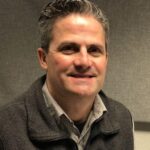 Brian Watson, a Special Agent with IRS Criminal Investigation, indicates that one must be constantly on guard when answering the phone or responding to email or texting, as scammers are continuously inventing new ways of getting us to provide personal or financial information so they can gain access or even steal our identity. He identifies the latest scams and show how most scam follow the same basic pattern. Click here
Brian Watson, a Special Agent with IRS Criminal Investigation, indicates that one must be constantly on guard when answering the phone or responding to email or texting, as scammers are continuously inventing new ways of getting us to provide personal or financial information so they can gain access or even steal our identity. He identifies the latest scams and show how most scam follow the same basic pattern. Click here
May 8: Caleb Simmons–“Online Education in Arizona: Shaping a Land-Grant Institution for the Future”
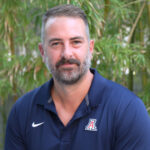 Caleb Simmons, the Executive Director of Online Education at the U of A, discusses the history of online education at the university and beyond levels, and how it is shaping education for the future. He describes how such education, like Arizona Online, provides rigorous education while giving access too those for whom college education might otherwise be unachievable. It also provides lifelong learning for post-traditional (and retired) learners. Click Here
Caleb Simmons, the Executive Director of Online Education at the U of A, discusses the history of online education at the university and beyond levels, and how it is shaping education for the future. He describes how such education, like Arizona Online, provides rigorous education while giving access too those for whom college education might otherwise be unachievable. It also provides lifelong learning for post-traditional (and retired) learners. Click Here
May 1: David Yetman–“Mexico’s Valleys of Cuicatlan and Tehuacan: From Deserts to Clouds”
 Take a trip through southern Mexico’s beautiful landscapes with David Yetman, noted authority on the Sonoran desert and host of the award winning public television series “In the Americas.” His lecture features photographs and stories about the culture, history, and environment of an extraordinary region. Dr. Yetman provides a synthesis of the geology, ecology, history, and cultures of the valleys, showing their importance and influence as early arteries for environment; and cultural interchange through Mexico. Click here
Take a trip through southern Mexico’s beautiful landscapes with David Yetman, noted authority on the Sonoran desert and host of the award winning public television series “In the Americas.” His lecture features photographs and stories about the culture, history, and environment of an extraordinary region. Dr. Yetman provides a synthesis of the geology, ecology, history, and cultures of the valleys, showing their importance and influence as early arteries for environment; and cultural interchange through Mexico. Click here
April 29: Professor Bryan Carter–“Digital Humanities: Empowering Faculty, Students, and the Community”
 Educators are constantly looking for new and better ways to create more effective learning experiences for students. At the U of A, Dr. Carter, the Director for Digital Humanities, Collage of Humanities, has been working on this in the area of Humanities. His research focuses on how using traditional and advanced interactive and immersive technologies change the dynamic within the learning Space. Click here
Educators are constantly looking for new and better ways to create more effective learning experiences for students. At the U of A, Dr. Carter, the Director for Digital Humanities, Collage of Humanities, has been working on this in the area of Humanities. His research focuses on how using traditional and advanced interactive and immersive technologies change the dynamic within the learning Space. Click here
April 22: Christine Childers–“A Balancing Act: Staying Upright as We Age”
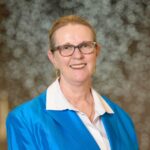 How is it we can walk upright? And why, as we grow older, do we find it so difficult to stay upright? Unfortunately the systems built into our body for balance decline with aging. Dr. Chris Childers, Dept. of Orthopaedic Surgery, Collage of Medicine, U of A, has developed a program to help us as we age. She discusses the role of physical activity in fall prevention and demonstrates ways to practice and improve aspects of balance. Click
How is it we can walk upright? And why, as we grow older, do we find it so difficult to stay upright? Unfortunately the systems built into our body for balance decline with aging. Dr. Chris Childers, Dept. of Orthopaedic Surgery, Collage of Medicine, U of A, has developed a program to help us as we age. She discusses the role of physical activity in fall prevention and demonstrates ways to practice and improve aspects of balance. Click
April 18: John Galgiani–“”Valley Fever in Animals and Humans”
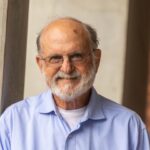 Many of us have experienced some form of Valley Fever, as have a number of our animals–particularly dogs. In fact, 2/3 of all U.S. infections occur in Arizona. Dr. Galgiani, founder of of the U of Arizona’s “Valley Fever Center for Excellence, describes three beneficial understandings from the Center to date: earlier diagnosis, better treatment, and a preventive vaccine. Click here
Many of us have experienced some form of Valley Fever, as have a number of our animals–particularly dogs. In fact, 2/3 of all U.S. infections occur in Arizona. Dr. Galgiani, founder of of the U of Arizona’s “Valley Fever Center for Excellence, describes three beneficial understandings from the Center to date: earlier diagnosis, better treatment, and a preventive vaccine. Click here
April 10: Marcia Neugebauer–“What’s Going On in Space?
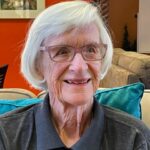 Dr. Marcia Neugebauer, an internationally recognized space physicist and Academy Village resident, explains important developments in space projects–both the scientific research missions, and the benefits and dangers of new technology that is being launched on an almost daily basis. She also describes the incredible proliferation of earth orbiting satellites–and how the dangerous debris in space as well as the number of orbiting satellites could result in collisions. Click here
Dr. Marcia Neugebauer, an internationally recognized space physicist and Academy Village resident, explains important developments in space projects–both the scientific research missions, and the benefits and dangers of new technology that is being launched on an almost daily basis. She also describes the incredible proliferation of earth orbiting satellites–and how the dangerous debris in space as well as the number of orbiting satellites could result in collisions. Click here
April 8: Goggy Davidowitz–“Feeding the World with Edible Insects”
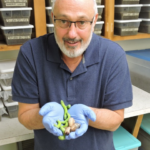 By the year 2050, the world will not be able to produce enough protein to sustain human population. Dr. Davidowits, a professor or Entomology, U of A, describes the search for novel alternative production solutions. For example, insects are highly nutritious, and more sustainable than vertebrate livestock. The edible insect industry is experiencing huge growth worldwide including the U.S. Unique solutions are described including some at the U of A. Click here.
By the year 2050, the world will not be able to produce enough protein to sustain human population. Dr. Davidowits, a professor or Entomology, U of A, describes the search for novel alternative production solutions. For example, insects are highly nutritious, and more sustainable than vertebrate livestock. The edible insect industry is experiencing huge growth worldwide including the U.S. Unique solutions are described including some at the U of A. Click here.
March 27: Christopher Bailey–“The Patient’s Guide to Pain Management
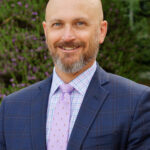 Although pain is one of the most common human experiences, the science of pain research and management is a relatively new field. Dr. Bailey, from the Pain Institute of Southern Arizona, describes the importance of pain clinics that specialize in the diagnosis and management of chronic pain and work to eliminate it with the goal of improving quality of life. He explains exciting new developments on the horizon for those who want to live with reduced or no pain. Click here
Although pain is one of the most common human experiences, the science of pain research and management is a relatively new field. Dr. Bailey, from the Pain Institute of Southern Arizona, describes the importance of pain clinics that specialize in the diagnosis and management of chronic pain and work to eliminate it with the goal of improving quality of life. He explains exciting new developments on the horizon for those who want to live with reduced or no pain. Click here
March 25: Randolph Nesse–“Why Aging Exists at all, and the Origins of Evolutionary Medicine”
 Dr. Randolph Nesse discusses his research program that has led to the new field of Evolutionary Medicine, and how these insights can help us understand our own aging. He describes his bringing together of a several fields of psychiatry, psychology and biology to examine our understanding of the process and issues related to aging. Click here
Dr. Randolph Nesse discusses his research program that has led to the new field of Evolutionary Medicine, and how these insights can help us understand our own aging. He describes his bringing together of a several fields of psychiatry, psychology and biology to examine our understanding of the process and issues related to aging. Click here
March 18: Lalitha Madhaven–“Novel regenerative Medicine-based Approaches for Parkinson’s Disease”
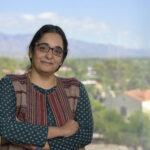 Dr. Madhaven, Associate Professor of Neurology, U of A, is working on developing rational therapeutic strategies to tackle aging and age related disorders such as Alzheimer’s and Parkinson’s Disease. She explains how she uses induced pluripotent stem cell technology that may be useful in uncovering the mechanisms underlying Parkinson’s Disease. Click here
Dr. Madhaven, Associate Professor of Neurology, U of A, is working on developing rational therapeutic strategies to tackle aging and age related disorders such as Alzheimer’s and Parkinson’s Disease. She explains how she uses induced pluripotent stem cell technology that may be useful in uncovering the mechanisms underlying Parkinson’s Disease. Click here
March 13: Luke Cole–“The Santa Cruz River: How We Got Here and Where We’re Going”
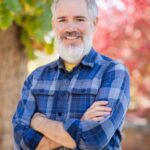 The Santa Cruz River has sustained humans in this region for over 12,000 years, and is the home of the longest continuous agricultural in the U.S., dating back 4,000 years. Since the 1800’s the Santa Cruz River has been overdrawn, polluted and abandoned. Within the last 15 years, the Santa Cruz has undergone a revitalization. Dr. Luke Cole is the director of the Santa Cruz River program within the Sonoran Institute, and describes the “journey” of the river and the Institute’s efforts to assure that it’s rebirth continues. Click here
The Santa Cruz River has sustained humans in this region for over 12,000 years, and is the home of the longest continuous agricultural in the U.S., dating back 4,000 years. Since the 1800’s the Santa Cruz River has been overdrawn, polluted and abandoned. Within the last 15 years, the Santa Cruz has undergone a revitalization. Dr. Luke Cole is the director of the Santa Cruz River program within the Sonoran Institute, and describes the “journey” of the river and the Institute’s efforts to assure that it’s rebirth continues. Click here
March 11: Julia Strange & Heather Beck–“TMC Healthcare: Yesterday, Today, Tomorrow”

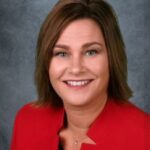 Julia Strange, (left) VP of TMC Healthcare, and Heather Beck (right), TMC Rincon Hospital Administrator briefly describe the long history of the Tucson Medical Canter since 1944. The Hospital has remained a non-profit Institution throughout all these years. A brand new Rincon TMC will be investing in and developing new ways of meeting the needs of the Rincon area. Eastside residents will see the advantages of using TMCOne for their medical needs. Click here
Julia Strange, (left) VP of TMC Healthcare, and Heather Beck (right), TMC Rincon Hospital Administrator briefly describe the long history of the Tucson Medical Canter since 1944. The Hospital has remained a non-profit Institution throughout all these years. A brand new Rincon TMC will be investing in and developing new ways of meeting the needs of the Rincon area. Eastside residents will see the advantages of using TMCOne for their medical needs. Click here
March 6: Peter Medine–“Three Shakespeare Sonnets: the Lyric Poem and the Subject of Romantic Love”
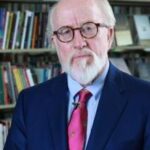 Shakespeare’s Sonnets loom Everest-like in the tradition of English lyric poetry. Dr. Medine, professor emeritus of the U of A., inquires into the source of the collection’s pre-eminence through an examination of three of its sonnets: Nos. 116, 129, and 29. By attending to metrics, rime, figurative language, and structure, we see Shakespeare develop, broaden, and deepen the poetic significance of his subject. Click here
Shakespeare’s Sonnets loom Everest-like in the tradition of English lyric poetry. Dr. Medine, professor emeritus of the U of A., inquires into the source of the collection’s pre-eminence through an examination of three of its sonnets: Nos. 116, 129, and 29. By attending to metrics, rime, figurative language, and structure, we see Shakespeare develop, broaden, and deepen the poetic significance of his subject. Click here
Feb. 28: Jerry Newman–“A Journey Through Central Europe
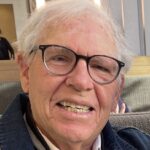 Dr. Jerry Newman, professor emeritus of History at Kent State University, shares an 18 day journey taken with his wife, Barbara, through Coatia, Slovenia, Austria and Poland. Both taught generalized European history for many years, and their sense of history through experiencing these countries. Click here
Dr. Jerry Newman, professor emeritus of History at Kent State University, shares an 18 day journey taken with his wife, Barbara, through Coatia, Slovenia, Austria and Poland. Both taught generalized European history for many years, and their sense of history through experiencing these countries. Click here
Feb. 26: Alex LaPierre–“Alamos: A Colonial Silver Town in the Dry Topics”
 Alex LaPierre, co-founder ot Borderland, takes us on a trip to one of Mexico’s magical cities, Alamos, Sonora. It is located between the desert and the tropics. He introduces the colonial architecture of the city and how its existence is a testimony to the cleverness of past peoples and a key to how to live and thrive in a desert environment. He discusses the cultural mores of a people and how they are rooted in survival, not only of the desert, but also the frontier issues over time. Click here
Alex LaPierre, co-founder ot Borderland, takes us on a trip to one of Mexico’s magical cities, Alamos, Sonora. It is located between the desert and the tropics. He introduces the colonial architecture of the city and how its existence is a testimony to the cleverness of past peoples and a key to how to live and thrive in a desert environment. He discusses the cultural mores of a people and how they are rooted in survival, not only of the desert, but also the frontier issues over time. Click here
Feb. 21: Ibrahim Garba– “Nations and Families of Nations: Indigenous Peoples in modern Nation-States”
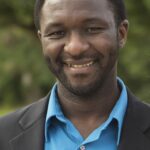 Respecting the concerns of Indigenous communities is a responsibility of more industrialized societies. These societies absorb an unjustly high percentage of the negative impacts of extractive and industrial development projects such as mining and logging. Garba, a student of philosophy and international human rights law, and a research professor at the College of Public Health, U of A focuses, among other topics, on the implications of the ethical conduct of health research in low resource settings. Click here
Respecting the concerns of Indigenous communities is a responsibility of more industrialized societies. These societies absorb an unjustly high percentage of the negative impacts of extractive and industrial development projects such as mining and logging. Garba, a student of philosophy and international human rights law, and a research professor at the College of Public Health, U of A focuses, among other topics, on the implications of the ethical conduct of health research in low resource settings. Click here
Feb. 19: Albrecht Claussen–“Myth Busting: Global Contacts in the Pre-Modern World”
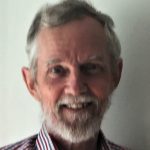 It is common among modern historians to assert that globalism emerged only around 1800. However, Dr. Claussen indicates that texts, images, ideas, knowledge, and objects migrated throughout the world in pre-modern times. Claussen uncovers hard-core facts of global economic exchange and the impact of exotic medicine, as well as intensive debates on religious issues. Click here
It is common among modern historians to assert that globalism emerged only around 1800. However, Dr. Claussen indicates that texts, images, ideas, knowledge, and objects migrated throughout the world in pre-modern times. Claussen uncovers hard-core facts of global economic exchange and the impact of exotic medicine, as well as intensive debates on religious issues. Click here
Jan. 31: Lucy Swanson–“The Zombie in Contemporary French Caribbean Fiction”
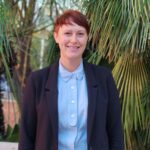 This lecture explores the origins of the zombie in African spirit beliefs and the Caribbean popular imaginary, and traces its evolution from depicting a victim of enslavement to that of a bloodthirsty monster found in films such as George Romero’s Night of the Living Dead (1968). Dr. Swanson, University of Arizona, then discusses how contemporary Haitian writers reimagine the figure today. Click here
This lecture explores the origins of the zombie in African spirit beliefs and the Caribbean popular imaginary, and traces its evolution from depicting a victim of enslavement to that of a bloodthirsty monster found in films such as George Romero’s Night of the Living Dead (1968). Dr. Swanson, University of Arizona, then discusses how contemporary Haitian writers reimagine the figure today. Click here
Jan. 29: Craig Nazareth & Alexander Szokoly–“Russo-Ukrainian War: 2024 Outlook”
 2024 will
2024 will bring tactical challenges in Ukraine’s effort to repel Russian advances. I Russia is to achieve its goals, it will have to increase its combat power and mobilizations. This would be highly dependent on western support. Professor Nazareth and Mr. Szokoly will discuss the insight their military experience gives them in predicting the future course of this war. Click here
bring tactical challenges in Ukraine’s effort to repel Russian advances. I Russia is to achieve its goals, it will have to increase its combat power and mobilizations. This would be highly dependent on western support. Professor Nazareth and Mr. Szokoly will discuss the insight their military experience gives them in predicting the future course of this war. Click here
Jan 22: Bob Smith & Brack Brown–“The Evolution of the Coral Reef Mural”
 This presentation documents the evolution of the large, outdoor, Coral Reef Mural from inspiration to dedication in photos. The mural’s inscription is “Let us cherish and protect the Ocean–Ancient Birthplace of all Life. . .” The entire creation took over two years of a large group of dedicated volunteers. Click here
This presentation documents the evolution of the large, outdoor, Coral Reef Mural from inspiration to dedication in photos. The mural’s inscription is “Let us cherish and protect the Ocean–Ancient Birthplace of all Life. . .” The entire creation took over two years of a large group of dedicated volunteers. Click here
January 17: Peter Medine: “The Character of Macbeth: His Conscience and His Tragedy”
 Dr. Medine , Professor Emeritus at the U of Arizona, describes the two opposing aspects of Macbeth’s character, the heroic and the criminal, and how they touch on the mystery of the evil of which the most gifted and morally astute beings may be capable. Macbeth stands out for his criminality; at the same time, Shakespeare invests him with an extraordinary conscience. Click here
Dr. Medine , Professor Emeritus at the U of Arizona, describes the two opposing aspects of Macbeth’s character, the heroic and the criminal, and how they touch on the mystery of the evil of which the most gifted and morally astute beings may be capable. Macbeth stands out for his criminality; at the same time, Shakespeare invests him with an extraordinary conscience. Click here
Jan. 10: Teadora Georgieva: “CRISPR: A Game-Changing Genetic Engineering Technique”
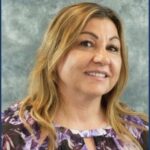 CRISPR, a game-changing engineering technique, is a powerful tool for gene and genome edit. CRISPR works in almost every organism: plants, small and large animals, and humans. Dr. Teadora Georgieva, Director of GEMM Core, helps us understand the capabilities of this remarkable technique. Click here
CRISPR, a game-changing engineering technique, is a powerful tool for gene and genome edit. CRISPR works in almost every organism: plants, small and large animals, and humans. Dr. Teadora Georgieva, Director of GEMM Core, helps us understand the capabilities of this remarkable technique. Click here
Jan. 8: Robert Linden and Maureen Orr: “One Couple’s Humanitarian Response to Health Care in the Third World”
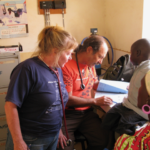 Doctors Without Borders provides independent, impartial medical humanitarian assistance to those affected by conflict, disease outbreaks, natural and human-made disasters in more than 70 countries. Dr. Bob and Nurse Maureen share their experiences in five different areas of the world between 2004 and 2012: Sumatra; West Nile, Uganda, Abkhazia, and Papua, New Guinea. Click here
Doctors Without Borders provides independent, impartial medical humanitarian assistance to those affected by conflict, disease outbreaks, natural and human-made disasters in more than 70 countries. Dr. Bob and Nurse Maureen share their experiences in five different areas of the world between 2004 and 2012: Sumatra; West Nile, Uganda, Abkhazia, and Papua, New Guinea. Click here
Dec. 20: Sabrina Helm: “The Effect of Climate Change as a Pre-Traumatic Stress
 As a result of global environmental changes, we are now facing a mental health crisis related to environmental issues such as climate anxiety, distress, and grief. Dr. Sabrina Helm is Associate Professor of Retailing and Consumer Science at the U of A, is particularly interested in the role of consumption in the context of climate change, psychological responses to the threat of climate change, and increased consumer resilience. Click here
As a result of global environmental changes, we are now facing a mental health crisis related to environmental issues such as climate anxiety, distress, and grief. Dr. Sabrina Helm is Associate Professor of Retailing and Consumer Science at the U of A, is particularly interested in the role of consumption in the context of climate change, psychological responses to the threat of climate change, and increased consumer resilience. Click here
Dec. 18: John Bauschatz: “Crime and Punishment in the Ancient World”
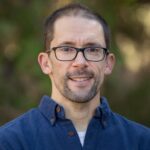 John Bauschatz is an Associate Professor of History and Classics at the U of A. He highlights some of the fascinating evidence we have for law and order in the Ancient Mediterranean world. Of central importance in this talk is the issue of boundaries: between right and wrong, imprisonment and freedom, individual and state. The talk examines law codes, tomb robbery, the trial and execution of Socrate, and death by gladiator. Click here
John Bauschatz is an Associate Professor of History and Classics at the U of A. He highlights some of the fascinating evidence we have for law and order in the Ancient Mediterranean world. Of central importance in this talk is the issue of boundaries: between right and wrong, imprisonment and freedom, individual and state. The talk examines law codes, tomb robbery, the trial and execution of Socrate, and death by gladiator. Click here
Dec. 13: Bryan Heidorn–“Misinformation: Carl Sagan’s Baloney Detection Tool Kit for 2003-2004”
 P. Bryan Heidorn, Associate Dean for Research and Graduate Affairs, U 0f A, examines Carl Sagan’s Baloney Detection Kit as a means to think critically and get closer to the truth. He updates the tookkit and adds a few new cognitive tools to deal better with today’s fractured information landscape. He also examines AI and how other algorithms are helping to spread untruth and how the same methods are being used tin baloney detection. Click here
P. Bryan Heidorn, Associate Dean for Research and Graduate Affairs, U 0f A, examines Carl Sagan’s Baloney Detection Kit as a means to think critically and get closer to the truth. He updates the tookkit and adds a few new cognitive tools to deal better with today’s fractured information landscape. He also examines AI and how other algorithms are helping to spread untruth and how the same methods are being used tin baloney detection. Click here
Dec. 11: Alex La Pierre: “Borderlandia”
 Alex La Pierre, Director of Bordlandia, takes us on a vicarious trip to Rocky Point, a fishing port nestled on the shores of the Sea of Cortez; and El Pinnate y Gran Alter UNESCO Biosphere Reserve, a vast wilderness area, home to some of Mexico’s most stunning geological formations. Click here
Alex La Pierre, Director of Bordlandia, takes us on a vicarious trip to Rocky Point, a fishing port nestled on the shores of the Sea of Cortez; and El Pinnate y Gran Alter UNESCO Biosphere Reserve, a vast wilderness area, home to some of Mexico’s most stunning geological formations. Click here
Dec. 4: Norm Scott: “Toward a Sustainable and Circular Food and Agricultural System”
 No area of human activity is more essential that a sustainable Food and Agricultural System (FAS). Agricultural productivity has been a strong focus during the 20th and 21st centuries. Climate change, conflicts, disruptions and wars globally impact the FAS. Science and technology have been key in generating the past transformation of food and agricultural systems; and this will remain so. A place must be found between local practices, and a concentrated agri-food sector. Professor Emeritus, Norm Scott Cornell University, will discuss these issues for the future of food production. Click here
No area of human activity is more essential that a sustainable Food and Agricultural System (FAS). Agricultural productivity has been a strong focus during the 20th and 21st centuries. Climate change, conflicts, disruptions and wars globally impact the FAS. Science and technology have been key in generating the past transformation of food and agricultural systems; and this will remain so. A place must be found between local practices, and a concentrated agri-food sector. Professor Emeritus, Norm Scott Cornell University, will discuss these issues for the future of food production. Click here
Nov. 29: Dan Engeljohn: “Leftovers and Food Safety”
 One in six Americans succumb to food borne illnesses each year. Dr. Engeljohn discusses the food and practices contribute most to food borne illness, hospitalizations, and death. Formerly head of the food safety policy office at the U.S. Dept. of Agriculture, Dr. Engeljohn moved to Tucson, and taught food safety and animal product practices at the University of Arizona. In his presentation he discusses the best practices to keep you safe on a daily basis. Click here
One in six Americans succumb to food borne illnesses each year. Dr. Engeljohn discusses the food and practices contribute most to food borne illness, hospitalizations, and death. Formerly head of the food safety policy office at the U.S. Dept. of Agriculture, Dr. Engeljohn moved to Tucson, and taught food safety and animal product practices at the University of Arizona. In his presentation he discusses the best practices to keep you safe on a daily basis. Click here
Nov. 27–Karl Flessa: “The Binational Effort to Restore the Colorado Delta”
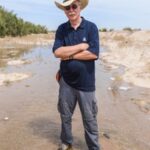 Since ~1935, upstream water diversions have reduced the amount of water that reaches the Colorado River’s Delta in the northern Gulf of California. In most years, the river no longer reaches the sea.Professor Karl Flessa, Professor of Geosciences at the U of A, has helped coordinate scientific monitoring of the effects of environmental flows to the Colorado River Delta. This presentation explores the history of the Colorado River Delta and the impact of work being done on restoring the delta. Click here
Since ~1935, upstream water diversions have reduced the amount of water that reaches the Colorado River’s Delta in the northern Gulf of California. In most years, the river no longer reaches the sea.Professor Karl Flessa, Professor of Geosciences at the U of A, has helped coordinate scientific monitoring of the effects of environmental flows to the Colorado River Delta. This presentation explores the history of the Colorado River Delta and the impact of work being done on restoring the delta. Click here
Nov. 22: Bruce Chamberlain: “Deep Dive into Classical Masterworks: Bach’s St. John Passion: 300 Years Later”
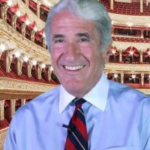 Why are some composers of the past still played and enjoyed today. During Lent of 2024, Bach’s monumental St. John Passion will turn 300 years old and we are still listening to it? UA Professor Emeritus will provide some insight into this question, along with creating some context to the genre of Passion music and its history. Click here
Why are some composers of the past still played and enjoyed today. During Lent of 2024, Bach’s monumental St. John Passion will turn 300 years old and we are still listening to it? UA Professor Emeritus will provide some insight into this question, along with creating some context to the genre of Passion music and its history. Click here
Nov. 13–Richard L. Poss: “Leonardo da Vinci: Art and Astronomy in the Florentine Renaissance”
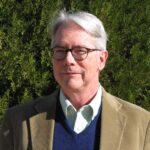 As one of the towering figures of Renaissance painting, Leonardo da Vinci had many other interests. He pursued scientific investigations; and his work contains remnants of Aristotelian physics and scientific endeavors–particularly in his astronomical writings. Dr. Poss, an Associate Professor of Astronomy at the U of A, examines Leonardo’s artistic and scientific endeavors with particular attention to his astronomical writings. Click here
As one of the towering figures of Renaissance painting, Leonardo da Vinci had many other interests. He pursued scientific investigations; and his work contains remnants of Aristotelian physics and scientific endeavors–particularly in his astronomical writings. Dr. Poss, an Associate Professor of Astronomy at the U of A, examines Leonardo’s artistic and scientific endeavors with particular attention to his astronomical writings. Click here
Sept. 30: Jim Kolbe–“Is the American Experiment with Democracy Coming to Its End?
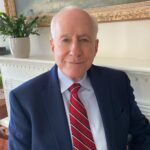 Jim Kolbe is the Former Congressman from Arizona’s 5th District and a public affairs consultant. In these days of fraught political events, politicized political life, and divided loyalties, many seek clarity and hope for America’s future. There are, however, efforts to achieve bipartisan accord through newly emerging political movements. Congressman Kolbe addresses some of this work, including the “fusion” effort. Click here
Jim Kolbe is the Former Congressman from Arizona’s 5th District and a public affairs consultant. In these days of fraught political events, politicized political life, and divided loyalties, many seek clarity and hope for America’s future. There are, however, efforts to achieve bipartisan accord through newly emerging political movements. Congressman Kolbe addresses some of this work, including the “fusion” effort. Click here
